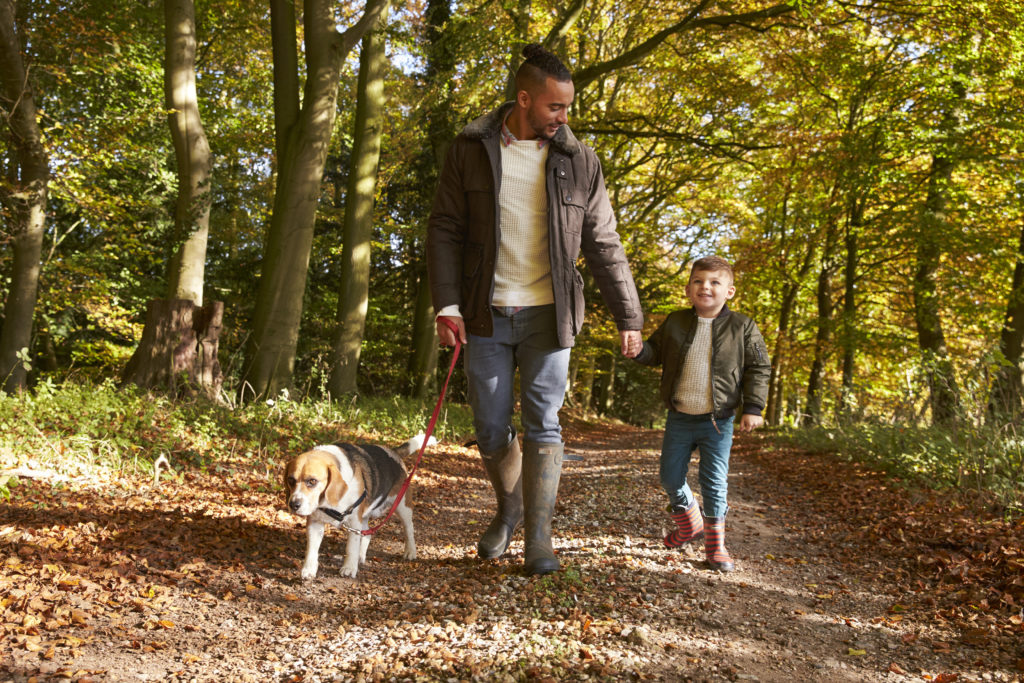
Use the Best Equipment. Walks should be enjoyable and pain-free, for you and your dog both. Use humane no-pull equipment that employs natural counter-balance approaches to curb pulling without the use of pain or the risk of tracheal damage. There are many choices on the market these days. Ask a positive reinforcement trainer to help you choose the option best suited to your dog’s body and snout shape, and her pulling behavior and intensity.
Walk Aware. Be on the lookout for cats, birds and small animals, other dogs, and toddlers who could get knocked over by a high-energy pooch. Ask for your dog’s attention, or cross the street or wait out of sight behind a parked car if needed.
Walk Prepared. Carry treats or a favorite toy to reward pleasing manners like sitting at curbs, not barking at other dogs, not chasing birds, polite greetings of friendly humans, and loose-leash walking. Any behavior you reinforce is going to happen more often. In other words: If you like it, reward it.
Walk Often. If your dog’s workout regiment amounts to a stroll around the block twice a day, surplus energy and under-stimulation will make it tough for him to behave when you take him out and about. The remedy? Amp it up. Find ways to allow him off-leash runs or playtime with other dogs, throw balls or Frisbees, take long hikes, hire a dog walker, or use a doggie daycare. The more exercise your dog gets, the more calm and attentive he’ll be.
Get Help. If your dog is very challenging to walk, consider hiring a trainer to help you—or, if you’re already working with a trainer, ask his or her advice. Your walks, too, can be a picture of interspecies harmony.

